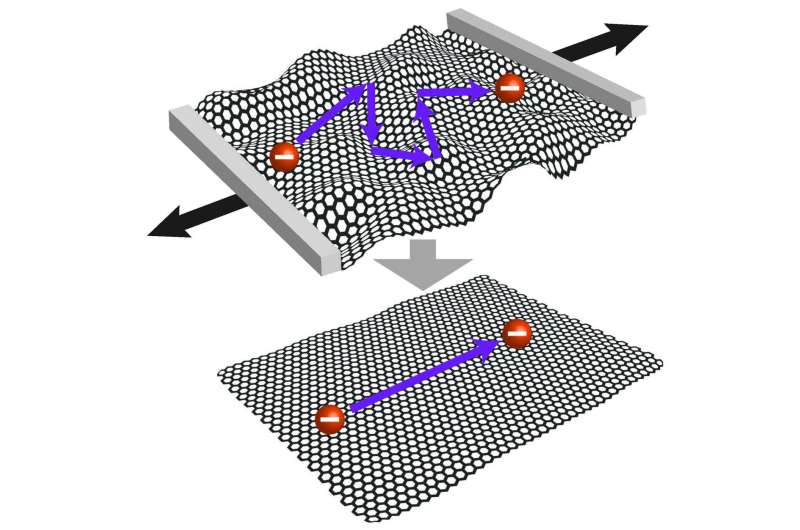Flatter graphene, faster electrons: Technique flattens corrugations in graphene layers to improve samples

The sample quality of graphene has been improved significantly since its discovery. One factor that limited further improvements has not been investigated directly so far, namely corrugations in the graphene sheet, i.e. microscopic distortions that form even when placed on atomically flat surfaces. Such corrugations can scatter the electrons when moving through an electronic device. Like bumps on a road that slow the pace of travel, corrugations in graphene slow traveling electrons. After flattening the corrugations, electrons move effectively faster through a graphene sheet.
Scientists from the Swiss Nanoscience Institute and the Department of ������Ƶics at the University of Basel have developed a technique to flatten corrugations in graphene layers. This led to an improved sample quality and is applicable to other two-dimensional materials. The results were recently published in ������Ƶical Review Letters.
The technique developed by the team of professor Christian Schönenberger of the Swiss Nanoscience Institute and Department of ������Ƶics at the University of Basel pulls the graphene sheet on two opposite sides, thereby flattening and smoothing it. "It is similar to pulling on a piece of crumpled paper that irons out wrinkles and folds," says Dr. Lujun Wang, first author of the study.
Dr. Andreas Baumgartner says, "After this process, the electrons travel effectively faster through the graphene sheet, their mobility increases, demonstrating an improved sample quality."
These findings not only illuminate the electron transport in graphene, but also provide techniques for studying other two-dimensional materials.
The study is published in ������Ƶical Review Letters.
More information: Lujun Wang et al, Mobility Enhancement in Graphene by in situ Reduction of Random Strain Fluctuations, ������Ƶical Review Letters (2020).
Journal information: ������Ƶical Review Letters
Provided by University of Basel





















